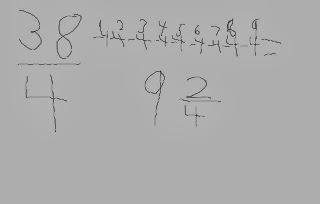Adding Fractions With Different Denominators
When adding fractions that have different denominators you should find a common denominator by either multiplying or dividing, for example:
1/2 + 6/10 =
1/2 x 5 = 5/10
5/10 + 6/10 = 11/10
11/10 is an improper fraction so you must find how much groups of 10 is in 11, 1 so there would be 1/10 left, so the answer would be 1 1/10
If the question has wholes with the fraction (a mixed number) you should do the following:
5 7/8 + 3 2/4 =
5 + 3 = 8 (these are the wholes)
2/4 x 2 = 4/8
7/8 + 4/8 = 11/8(an improper fraction)
Do as before when you have an improper fraction so you get a mixed number. And add the wholes in the end.
1 3/8 + 8 = 9 3/8






